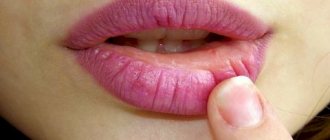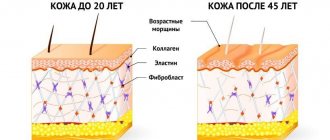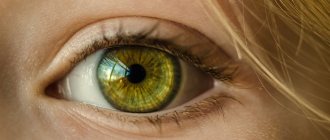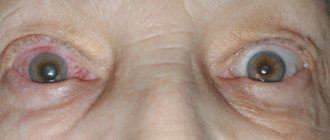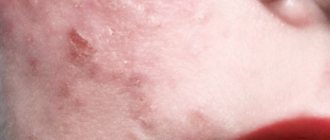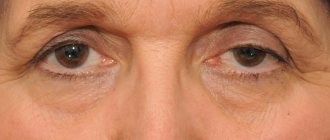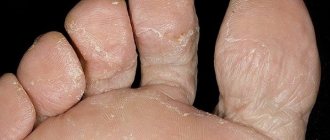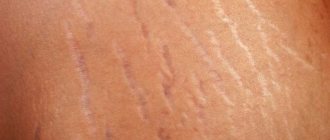The disease is treated by: Pediatric ophthalmologist
- Causes of blepharitis
- Types of blepharitis
- Blepharitis in children: symptoms, diagnosis and treatment
- Diagnostics
- Treatment of blepharitis
Blepharitis is a disease that occurs quite often in children. It is an inflammation of the edges of the eyelids, which is associated with very thin skin and fiber in this place, because the tissue is loose and there is no fat.
As the disease progresses, the eyes do not always change in appearance. This misleads parents, provokes inaction or, in some cases even worse, the use of folk remedies without consulting a doctor. You should know and always remember that blepharitis is a dangerous disease that can have a number of complications.
Causes of blepharitis:
- Staphylococcus aureus;
- the presence of parasites in the body;
- hypothermia;
- infectious diseases;
- psycho-physical fatigue;
- weak immunity;
- problems with the gastrointestinal tract;
- Demodex is a mite that gets into the eyelash bulbs through contact with feathers, birds, diabetes, allergic diseases, etc.;
- helminths;
- constant eye strain;
- getting dirt, dust, smoke, etc. into the eyes;
- diabetes;
- avitaminosis;
- impaired metabolism;
- chronic tonsillitis;
- anemia.
You have found a red spot on your child’s eye – should you worry and what should you do?
The child’s blood vessels, including those piercing the eyes, are characterized by increased fragility.
As a result of this, any injury, overexertion or loud scream can provoke their rupture.
In this case, a red spot appears on the mucous membrane of the eye, which causes a lot of concern among parents.
Regardless of the symptoms, if the redness does not go away for a long time or the child complains of severe discomfort, you should immediately visit an ophthalmologist.
A red spot is formed if the capillaries rupture, and blood leaks to the surface of the mucosa through the conjunctiva.
- various injuries, for example, received during games;
- infectious diseases;
- eye strain. It is especially common among schoolchildren and students who spend a long time studying;
- lack of sleep. Typical for teenagers, for example, during preparation for exams or disruption of the daily routine;
- severe cough. This cough can occur during infectious diseases;
- cry. Often, while crying, children rub their eyes with their hands, which results in the rupture of small blood vessels and the formation of red dots;
- external influences. A similar problem can arise against the background of negative external influences, for example, sudden temperature changes or strong winds;
- overvoltage. Children, just like adults, can have intestinal problems. During severe constipation, excessive tension and rupture of capillaries occurs.
However, parents should be aware of possible side complications and ask the doctor to cancel such treatment.
You should seek help immediately if your child experiences the following symptoms:
- severe pain that prevents you from fully opening and closing your eyes;
- increase in spot;
- hearing, speech or coordination problems.
If the patient complains of a headache or has problems with coordination due to the formation of a red spot, this may indicate the presence of a traumatic brain injury.
Most often, therapy consists of using special drops to soothe the mucous membrane and accelerate the regeneration of damaged tissue.
If redness occurs due to an injury to the eye or head, the baby requires hospitalization.
Prevention
performing special exercises. Eye gymnastics allows you to relieve excess tension and feelings of fatigue
In addition, regular exercise helps strengthen muscles and blood vessels. Gymnastics is especially useful for students and schoolchildren; normalization of the daily routine. It is important to ensure that the child goes to bed and gets up on time; reduce the time spent in front of a computer or tablet monitor; monitor the air humidity in the room. If there is excessive dryness, it is recommended to place a humidifier in the nursery; normalize nutrition. The child’s diet should include fresh fruits, vegetables, meat, as well as a number of products that help strengthen the walls of blood vessels; strengthen the immune system. In the autumn-winter season, it is important to give your child multivitamin complexes. Preference can be given to complexes aimed at eye health; observe safety precautions. When performing some work involving small parts, it is important to teach your child to use eye protection.
In most cases, the formation of a red spot in a child’s eye is associated with mechanical injuries, for example, received during play.
Parents should be wary of two things:
- if the stain does not go away for a long time or becomes larger;
- if the child suffers from accompanying symptoms, especially those related to speech or coordination disorders.
In most cases, the formation of a red spot in a child’s eye is associated with mechanical injuries and requires referral to specialists.
In some cases, redness of the eyelids is not a consequence of serious illnesses, so parents do not need to worry
However, it is important to remember that the cause of the phenomenon can only be determined by a qualified pediatrician.
Thin skin through which blood vessels are visible is considered normal for infants. Over time, such a flaw will disappear. There is no need to worry if the redness is not accompanied by peeling, itching, or an increase in basal temperature.
Insect bites can also cause swelling. In such situations, special gels will come to the aid of parents, the use of which is approved for children from the first months of life.
Blepharitis in children: symptoms, diagnosis and treatment
Signs of illness
Blepharitis is similar in symptoms to other diseases. Therefore, if any of the signs listed below are identified, parents should not draw independent conclusions, but immediately contact a specialist.
Symptoms of blepharitis:
- hyperemia (redness) of the conjunctiva;
- itching;
- swelling of the eyelids;
- eyelash loss;
- burning;
- narrowing of the eyes;
- irritation under the lower eyelid;
- crusts along the edges of the eyelashes, turning into bleeding ulcers;
- inflammation of the meibomian glands - leakage of a white-yellow mass from under the eyelids when pressed;
- peeling of the skin around the eyes, in the eyebrow area, on the head;
- vascular network on the face.
If you have several symptoms, you should never hesitate or self-medicate. The child needs to be shown to a specialist for proper diagnosis and treatment.
Causes
The following reasons exist for the formation of pathological symptoms:
- the use of low-quality cosmetics, in some cases they may be expired, resulting in severe redness and damage to the skin;
- allergic reactions in the eyes, accompanied by excessive dryness of the corners of the eyelids (plant flowering, animal hair, dust, food products);
- insufficient intake of nutrients, vitamins, microelements and minerals from food, which forms hypovitaminosis;
- the use of certain medications to which the patient may develop hypersensitivity;
- rubbing and scratching the skin on the eyelids, which leads to mechanical damage and inflammation of the corners of the eyes;
- autoimmune reactions of the body, that is, cells of the human immune system attack their own tissues (rheumatoid arthritis, systemic lupus erythematosus);
- dermatological diseases (dermatitis, rosacea);
- inflammatory conditions of the eyelids that develop in humans over a long period of time (blepharitis, meibomitis, chalazion);
- viral eye infection;
- bacterial proliferation leading to purulent infection.
Each of these conditions is characterized not only by inflammation and cracked skin in the corners of the eyes, but also by other clinical symptoms, by which the true cause can be identified.
Diagnostics
A pediatric ophthalmologist examines the child, collects anamnesis and complaints. Concomitant diseases are also identified or rejected, and laboratory tests are carried out.
Biomicroscopy of the eye is used to determine visual acuity. The first technology makes it possible to assess the condition of the tear film, the edges of the eyelids, the eyeball, etc. Refraction and accommodation are examined, on the basis of which the following can be identified: myopia, astigmatism, etc.
To confirm or deny the presence of Demodex mites, eyelash microscopy is performed.
If there is a suspicion of the infectious nature of the disease, a BAC culture of a smear from the conjunctiva is performed.
To identify helminths, a stool test is prescribed, and in case of an allergic course of the disease, allergy tests are performed.
When blepharitis exists for a long time and causes hypertrophy of the eyelid margins, the doctor prescribes an examination to exclude various forms of cancer, carried out by biopsy followed by histological examination of the biomaterial.
Treatment
For each individual pathology that appears, there is a specific treatment. Most often doctors prescribe the following medications:
- antibacterial drops (Tobrex, Vigamox);
- antibacterial ointments (Erythromycin, Tetracycline, Levomekol);
- antiviral drops (Poludan);
- antiviral ointments (Floreal, Bonafton);
- systemic antiviral drugs (Acyclovir, Arbidol);
- non-steroidal anti-inflammatory drops and ointments based on diclofenac;
- non-steroidal anti-inflammatory drops and ointments based on hormonal substances, for example, dexamethasone;
- wound healing ointments (Solcoseryl);
- multivitamin drops in the eyes to improve metabolism and general tissue condition;
- multivitamin preparations for oral administration (Aevit, Alphabet, Blueberry Forte).
Antibiotics and steroids must be used for a short course of treatment to avoid side effects. All other drugs can be used with prolonged action, the body will not become addicted.
Treatment of blepharitis
In case of an allergic form of the disease, complete exclusion of the identified allergen is recommended. Recommendations may also include, depending on the type of blepharitis:
- applying eye cream;
- special shampoo for seborrheic form;
- eyelid massage;
- strengthening the immune system;
- external treatment of eyelids and/or eyelashes;
- use of ointments;
- antimicrobial eye drops;
- diet adjustments;
- physiotherapy (electrophoresis, UHF, magnetic therapy, ultraviolet treatment, darsonval);
- removal of ulcer crusts in peptic ulcer disease.
If you delay treatment, ignore the doctor’s recommendations, or self-medicate, this can cost your baby his sight and also lead to other unpleasant consequences.
Cosmetology procedures
Cosmetic procedures help quickly get rid of dark circles under the eyes. This can be done either by a specialist or independently.
It is necessary to pay special attention to moisturizing and nourishing the skin
Various oils are effective for dark circles under the eyes at home. List of especially useful species for this problem:
- olive;
- grape seeds;
- avocado oil;
- Shea Butter.
It is better to use them before bed on slightly damp skin. After 30-40 minutes, remove the residue with a damp disc.
Homemade face masks will help nourish the skin with all the necessary substances and speed up blood circulation in the tissues. Moreover, their ingredients are quite inexpensive.
You can get rid of dark circles under the eyes at home by making compresses.
To do this, just prepare a decoction of chamomile or string. These plants are great for soothing sensitive skin. For long-lasting results, they must be kept on the eyelids for about 15 minutes daily. And for those who do not want to waste time preparing decoctions, patches for dark circles are suitable.
Such tools can be used even while on the road or at work. Therefore, patches are popular among office workers. The price is reasonable; allergic reactions usually do not occur. They also tone sensitive skin and improve blood circulation.
This is one of the easiest ways to get rid of dark circles under the eyes at home. Compresses in combination with additional cosmetic attributes provide a quick visual effect and good skin condition.
Using masks for dark circles
A homemade mask for bags and dark circles under the eyes made from cucumbers is one of the most popular options. It is necessary to blot cotton pads with fresh vegetable juice.
Keep in the eyelid area for 15 minutes. For a more lasting result, you can add a few drops of peach oil. Repeat the procedure 1-2 times a week.
Cottage cheese will help quickly remove dark circles under the eyes. It needs to be ground into a plastic paste and placed in the suffering area. Keep it for 20 minutes. It is better to clean with a cotton pad soaked in a decoction of green tea.
Another homemade mask for dark circles is made from potatoes.
The following components are required:
- 1 medium potato;
- 1 teaspoon of any vegetable oil.
If desired, replace the butter with oatmeal in the same amount. The mask should have the consistency of thick sour cream. Grate the potatoes on a fine grater, then add butter or flour. Keep on skin for 20-30 minutes. Repeat 2 times a week. Professional products will help enhance the effect of home cosmetics.
For example, a cream against dark circles under the eyes. It must contain active ingredients of natural origin to minimize the risk of an allergic reaction in the eyelid area.
Use of cosmetics
Depending on the cause, therapy takes varying amounts of time. For women, treatment is combined with visits to a cosmetologist. He prescribes various ways to deal with the problem.
These include sessions in the clinic and proper home skin care. For example, a serum for dark circles under the eyes or a filler.
The specialist knows how to quickly remove bruises and shadows under the eyes. Camouflage sessions are often done. The procedure is aimed at long-lasting results. It makes it possible to get rid of circles as quickly as possible.
To begin with, the cosmetologist thoroughly cleanses the skin and injects an anesthetic. When the drug begins to act, you can begin to inject pigment into the upper layer of the epidermis.
The duration of the entire procedure is about 60 minutes. It all depends on how large the area of bruises is and their intensity. The camouflage of dark circles under the eyes does not harm your health. Contains components of plant origin.
Anesthetic cream helps combat discomfort. The final result is visible after 30 days. But among the disadvantages one can note the high price. The camouflage of dark circles under the eyes gives the face freshness, but only masks the existing problem, so it is impossible to do without therapy.
You can also consult a makeup artist. He will take into account all skin characteristics and wishes. As a result, he will choose the best concealer for dark circles under the eyes, taking into account the needs of the client.
It is important that it not only matches the color parameters and texture, but also not, since many representatives of this group of products have such a drawback. Properly done makeup is the fastest way to get rid of dark circles under the eyes. Properly done makeup is the fastest way to get rid of dark circles under the eyes
Properly done makeup is the fastest way to get rid of dark circles under the eyes.
"SM-Clinic" - taking care of your child
Our medical center employs some of the best pediatric doctors in various fields in St. Petersburg. Our professionalism is confirmed by an impeccable reputation. The clinic has advanced equipment that allows you to quickly and accurately diagnose various ophthalmological diseases, including blepharitis.
Make an appointment and come to us if you need truly competent help and effective therapy.
Ageev Vladimir Sergeevich Clinic
Author of the article
Ageev Vladimir Sergeevich
Candidate of Medical Sciences
Specialty: ophthalmologist
Experience: 16 years
The information in this article is provided for reference purposes and does not replace advice from a qualified professional. Don't self-medicate! At the first signs of illness, you should consult a doctor.
Prevention
To prevent dry eyelid skin, redness and inflammation, it is recommended to use the following preventive measures:
- periodic visits to doctors of narrow specialties for a general examination and laboratory tests;
- proper eyelid skin care, use of moisturizing ointments;
- no use of expired cosmetics; it is necessary to monitor the quality of each product used;
- maintaining good hygiene, especially with regard to the use of contact lenses;
- eating food containing all the vitamins and nutrients; if this is not enough, use multivitamin courses for prevention;
- timely treatment of all systemic diseases.
With strict adherence to all methods of prevention, it is not always possible to prevent ophthalmological disease. But the risk of their occurrence will be significantly reduced.
Prices
| Name of service (price list incomplete) | Price |
| Appointment (examination, consultation) with an ophthalmologist, primary, therapeutic and diagnostic, outpatient | 1750 rub. |
| Consultation (interpretation) with analyzes from third parties | 2250 rub. |
| Prescription of treatment regimen (for up to 1 month) | 1800 rub. |
| Prescription of treatment regimen (for a period of 1 month) | 2700 rub. |
| Consultation with a candidate of medical sciences | 2500 rub. |
| Biomicroscopy of the anterior segment of the eye | 500 rub. |
| Selection of glasses with plain lenses | 600 rub. |
| Subconjunctival injection (1 eye) | 500 rub. |
| Removal of a foreign body from the conjunctiva, from the eyelids | 800 rub. |
